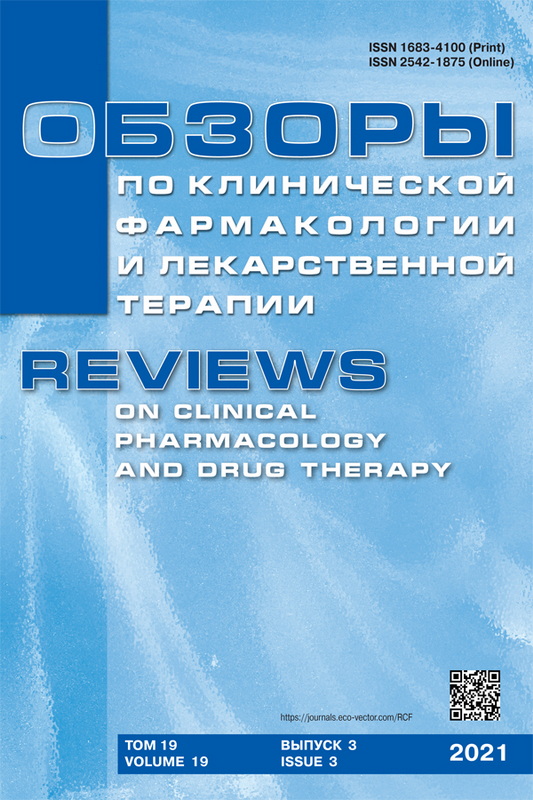Dark cytotoxicity of submicrometer vaterite particles loaded with photosensitizer Fotoditazin and the vaterite-based core – shells structures
- Authors: Verkhovskii R.A.1,2, Nechaeva O.V.2, Guslyakova O.I.1, Svenskaya Y.I.1
-
Affiliations:
- Chernyshevsky Saratov National Research State University
- Gagarin Saratov State Technical University
- Issue: Vol 19, No 3 (2021)
- Pages: 333-338
- Section: Original study articles
- Submitted: 08.10.2021
- Accepted: 08.10.2021
- Published: 08.10.2021
- URL: https://journals.eco-vector.com/RCF/article/view/82959
- DOI: https://doi.org/10.17816/RCF193333-338
- ID: 82959
Cite item
Abstract
Photodynamic therapy (PDT) is based on the use of photosensitizers together with a light at the wavelength corresponding to its absorption maximum. Photosensitizers are able to generate reactive oxygen species under the visible or infrared light irradiation. They are broadly used for the treatment of cancer and infections due to their physical and chemical properties. Dose-dependent light induced cytotoxicity of photosensitizers shows the strong relation between its concentration in the treatment area and PDT efficiency. With this regard, the development of novel carriers for targeted delivery of photosensitizers is a very prospective research direction, as allows for the enhancement of the local drug concentration in the treatment area and the reduction of the incidental dark toxicity in healthy tissue associated with a classic PDT. Mesoporous vaterite particles are considered as a promising tool for biomedical application due to their biodegradability, high payload ability, as well as to the simplicity and cheapness of their fabrication. The efficiency of vaterite carrier application for a PDT delivery system design has been previously demonstrated. With this regard, the current study was aimed at the evaluation of dark cytotoxicity of the submicron vaterite particles and the vaterite-based core-shells, both loaded with Fotoditazin® photosensitizer.
Full Text
About the authors
Roman A. Verkhovskii
Chernyshevsky Saratov National Research State University; Gagarin Saratov State Technical University
Author for correspondence.
Email: r.a.verhovskiy@mail.ru
Junior scientific researcher
Russian Federation, 83, Astrakhanskaya str., Saratov, 410012; 77, st. Polytechnic, Saratov, 410054Olga V. Nechaeva
Gagarin Saratov State Technical University
Email: olgav.nechaeva@mail.ru
ORCID iD: 0000-0003-3331-1051
SPIN-code: 9984-9594
Dr. Sci. (Biol.)
Russian Federation, 77, st. Polytechnic, Saratov, 410054Olga I. Guslyakova
Chernyshevsky Saratov National Research State University
Email: olga.gusliakova17@gmail.com
ORCID iD: 0000-0001-8387-0711
SPIN-code: 2642-9014
Scientific researcher
Russian Federation, 83, Astrakhanskaya str., Saratov, 410012Yulia I. Svenskaya
Chernyshevsky Saratov National Research State University
Email: yulia_svenskaya@mail.ru
ORCID iD: 0000-0002-6359-2969
SPIN-code: 4546-5745
Cand. Sci. (Phis. Mat.), Senior scientific researcher
Russian Federation, 83, Astrakhanskaya str., Saratov, 410012References
- Abrahamse H, Hamblin MR. New photosensitizers for photodynamic therapy. Biochem J. 2016;473(4):347–364. doi: 10.1042/BJ20150942
- Ermakov AV, Verkhovskii RA, Babushkina IV, et al. In Vitro Bioeffects of Polyelectrolyte Multilayer Microcapsules Post-Loaded with Water-Soluble Cationic Photosensitizer. Pharmaceutics. 2020;12(7):610. doi: 10.3390/pharmaceutics12070610
- Tang J, Wang L, Loredo A, et al. Single-atom replacement as a general approach towards visible-light/near-infrared heavy-atom-free photosensitizers for photodynamic therapy. Chem Sci. 2020;11(26):6701–6708. doi: 10.1039/D0SC02286A
- Svenskaya YI, Pavlov AM, Gorin DA, et al. Photodynamic therapy platform based on localized delivery of photosensitizer by vaterite submicron particles. Colloids Surfaces B Biointerfaces. 2016;146:171–179. doi: 10.1016/j.colsurfb.2016.05.090
- Svenskaya Y, Gorin D, Parakhonskiy B, Sukhorukov G. Point-wise laser effect on NIH/3T3 cells impregnated with photosensitizer-loaded porous calcium carbonate microparticles. 15th Int Conf on Nanotechnology (IEEE-NANO). 2015:1513–1516. doi: 10.1109/NANO.2015.7388931
- Parakhonskiy BV, Haase A, Antolini R. Sub-Micrometer Vaterite Containers: Synthesis, Substance Loading, and Release. Angew Chemie Int Ed. 2012;51(5):1195–1197. doi: 10.1002/anie.201104316
- German SV, Novoselova MV, Bratashov DN, et al. High-efficiency freezing-induced loading of inorganic nanoparticles and proteins into micron- and submicron-sized porous particles. Sci Rep. 2018;8(1):17763. doi: 10.1038/s41598–018–35846-x
- Donath E, Sukhorukov GB, Caruso F, et al. Novel Hollow Polymer Shells by Colloid-Templated Assembly of Polyelectrolytes. Angew Chemie Int Ed. 1998;37(16):2201–2205. doi: 10.1002/(SICI) 1521–3773(19980904)37:16<2201::AID-ANIE2201>3.0.CO;2-E
- Lengert EV, Verkhovskii RA, Genina EA, et al. Mesoporous particles for transdermal delivery of the antifungal drug griseofulvin. J Phys Conf Ser. 2020;1461:012083. doi: 10.1088/1742–6596/1461/1/012083
- Gusliakova O, Verkhovskii R, Abalymov A, et al. Transdermal platform for the delivery of the antifungal drug naftifine hydrochloride based on porous vaterite particles. Mater Sci Eng. C. 2021;119:111428. doi: 10.1016/j.msec.2020.111428








